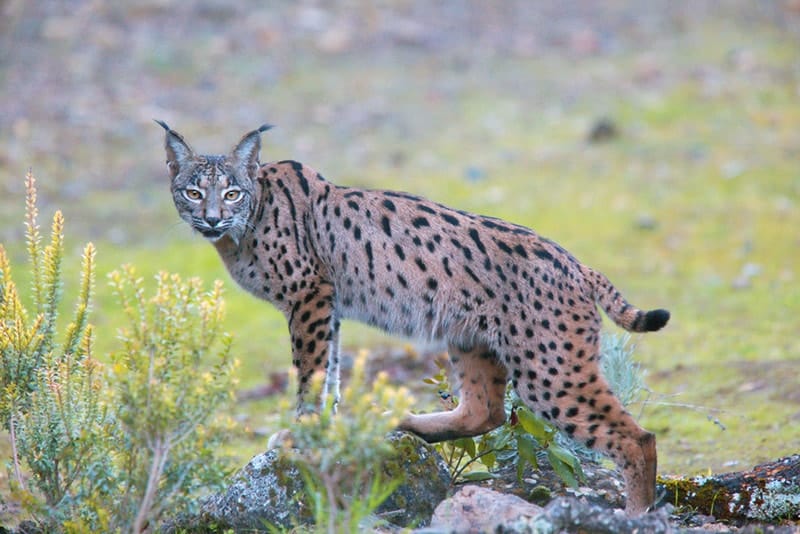Most people are familiar with the common housecat and the majestic lion, but you may not know that there are over 40 species of wild cats in the world.1 With many of them related, it’s easy to look at your cat and wonder what other cat breeds are lurking out there. For your interest, we’ve compiled an article all about some of the most interesting wild cats you may not know about. Join us down below for all the paw-some details.

The 15 Types of Wild Cats
1. Ocelot
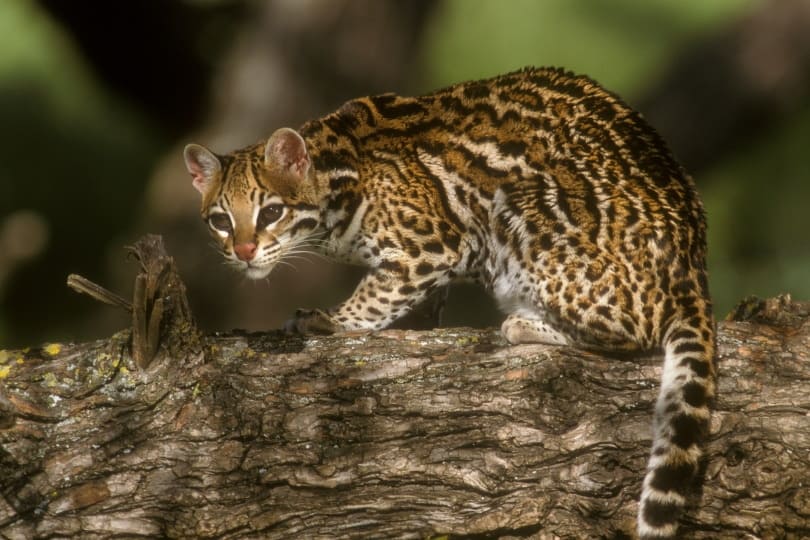
| Scientific name: | Leopardus pardalis |
| Weight: | 15–30 pounds |
| Natural habitat: | Subtropical and tropical forests, grasslands, marshlands |
The ocelot is one of the more popular of the unpopular wild cats, with a leopard-like grace and the spots to match. Now endangered, ocelots primarily roam the rainforests of Central and South America, and only a few live in Texas today.
They’re consummate predators with athletic abilities that extend to tree climbing and swimming, and they’ve also been known to fight off monkeys in the wild.
2. Caracal
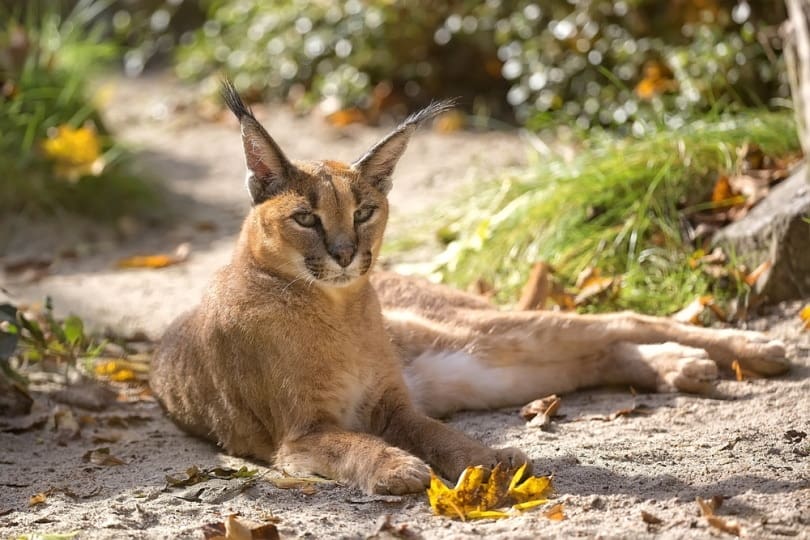
| Scientific name: | Caracal caracal |
| Weight: | 18–42 pounds |
| Natural habitat: | Deserts, prairies, scrubland |
Caracals are one of the most striking small cats, marked by their reddish-golden fur and long, elf-like ears that end in expressive little tufts of fur. We know they stem back to ancient Egyptian culture, but in general, Caracals are secretive, elusive critters that defy many conventional observation efforts.
Caracals are sometimes kept as exotic pets because of their beauty, but they’re known to be antisocial and destructive in captivity.
3. Cougar
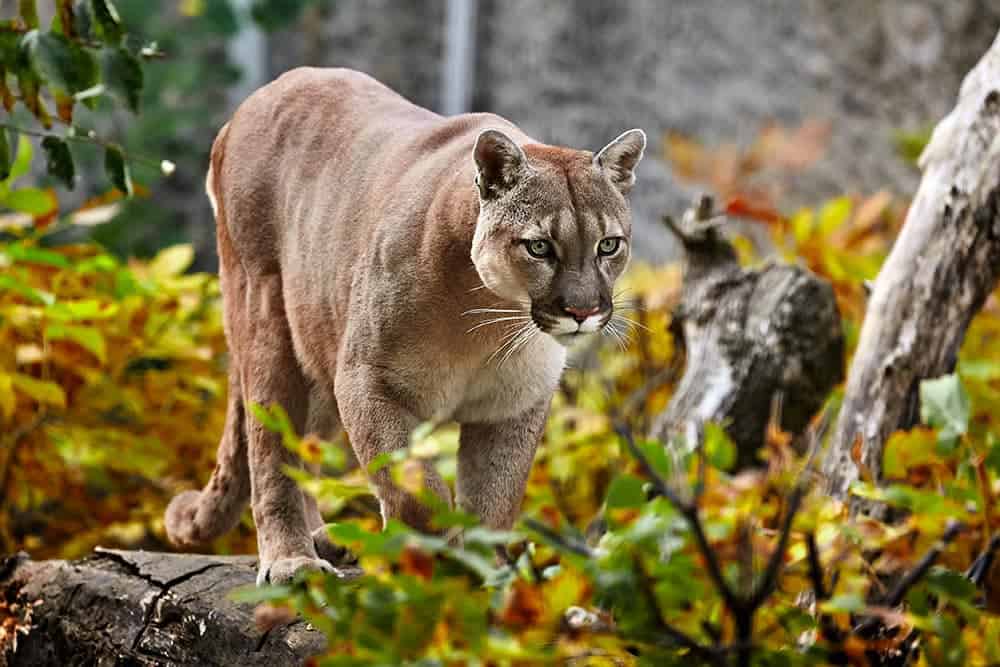
| Scientific name: | Puma concolor |
| Weight: | 100–125 pounds |
| Natural habitat: | Mountains, forests |
Also known as the puma or mountain lion, cougars have been scaring people with their blood-curdling screams since recorded history began. As their nickname “mountain lion” implies, cougars are endemic to many mountainous, hilly regions across the Americas.
Cougars have been known to show startling violence at times and attack livestock but prefer to live in solitude and hunt deer or other wild mammals.
4. Lynx
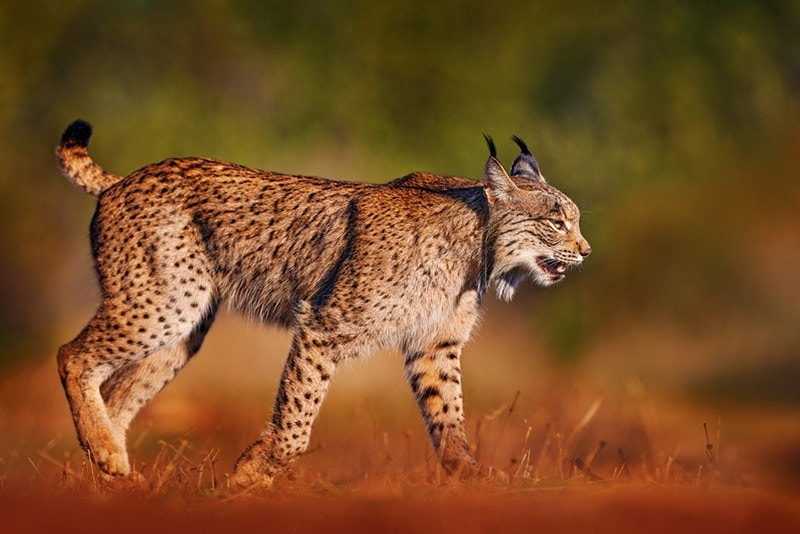
| Scientific name: | Lynx |
| Weight: | 20–60 pounds |
| Natural habitat: | Boreal forests, high-altitude forests |
The bold, shaggy lynx is one of the most interesting boreal predators, and there are four distinct varieties across the globe: the Iberian Lynx, the Eurasian Lynx, the Canadian Lynx, and the Bobcat.
The Bobcat is the smallest lynx, appearing like a large, long-haired house cat. The largest is the Canadian Lynx, which looks peculiar and almost wolf-like.
5. Serval
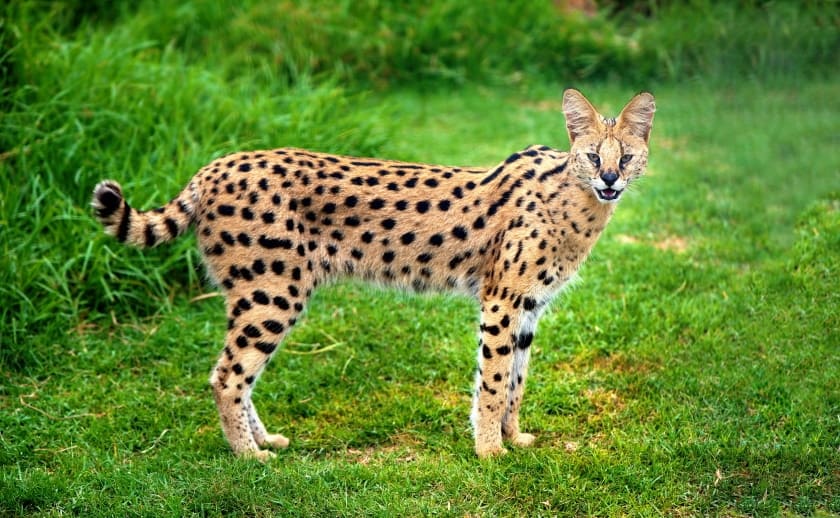
| Scientific name: | Leptailurus serval |
| Weight: | 20–40 pounds |
| Natural habitat: | Moorlands, savannahs, grasslands |
The African Serval is an odd wild cat with the head of an ordinary house cat but a larger, lankier body more reminiscent of a cheetah or jaguar. In fact, they have the longest limbs of any cat compared to their body size.
Servals are mainly found in grassy plains, savannahs, and moister moors. They have a trademark cute little hopping pounce biologists think was developed to hunt flushed birds.
6. African Wildcat
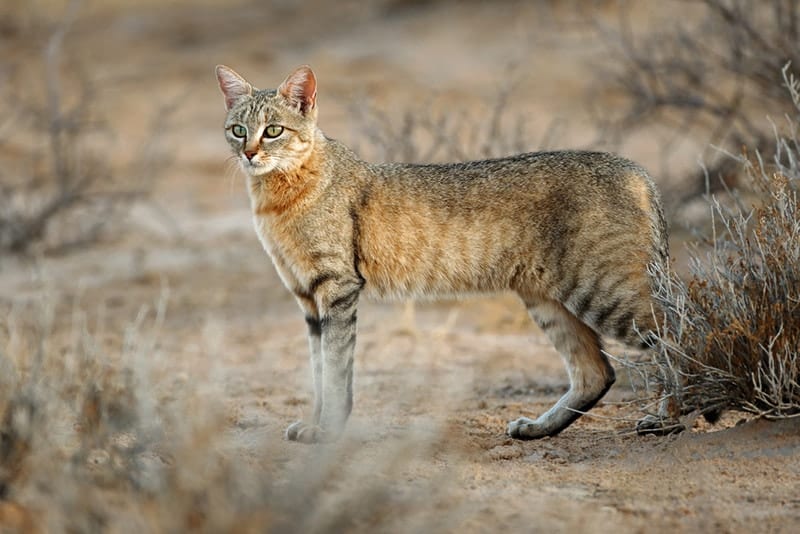
| Scientific name: | Felis lybica |
| Weight: | 6–14 pounds |
| Natural habitat: | Savannahs, deserts, scrublands, open forests |
African wildcats are one of the most widespread wild cats today, roaming most of Africa and Asia. They’re solitary predators that behave much like our domesticated cats, with whom they share a common ancestor.
The African Wildcat sometimes breeds with stray or feral cats and shows different colors but traditionally has a gray coat with black stripes across the back.
7. Kodkod
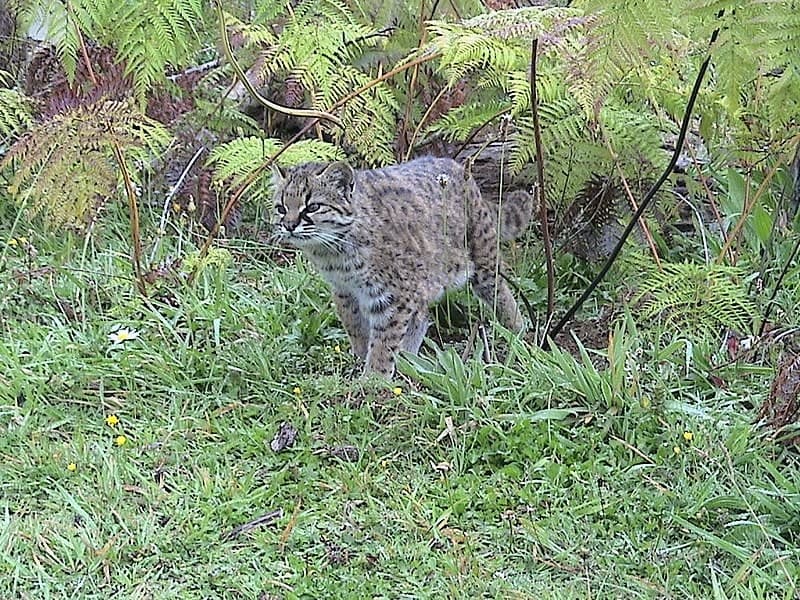
| Scientific name: | Leopardus guigna |
| Weight: | 4.4–5.5 pounds |
| Natural habitat: | Temperate forests, rainforests, coastal hills/mountains |
The diminutive and adorable Kodkod is the smallest wildcat native to the Americas, but they’re exclusively native to the Andean regions of Chile and bits of Argentina. These mini leopard lookalikes are adept swimmers and tree climbers, though they’ve recently become endangered due to the logging industry in Chile.
8. Snow Leopard
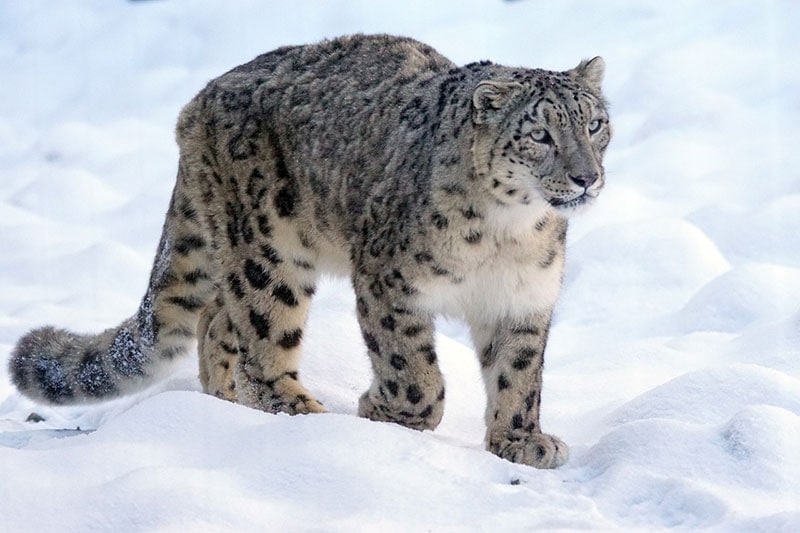
| Scientific name: | Panthera uncia |
| Weight: | 60–120 pounds |
| Natural habitat: | Alpine and subalpine |
The snow leopard is a large cat native to mountainous regions of central and southern Asia, preferring to live in the sparse vegetation of the snowy, unforgiving alpine highlands.
Poaching in China and other parts of Asia has proved detrimental to this gorgeous predator’s population. There are only 4,000 to a maximum of 6,500 snow leopards left in the world.
9. European Wildcat
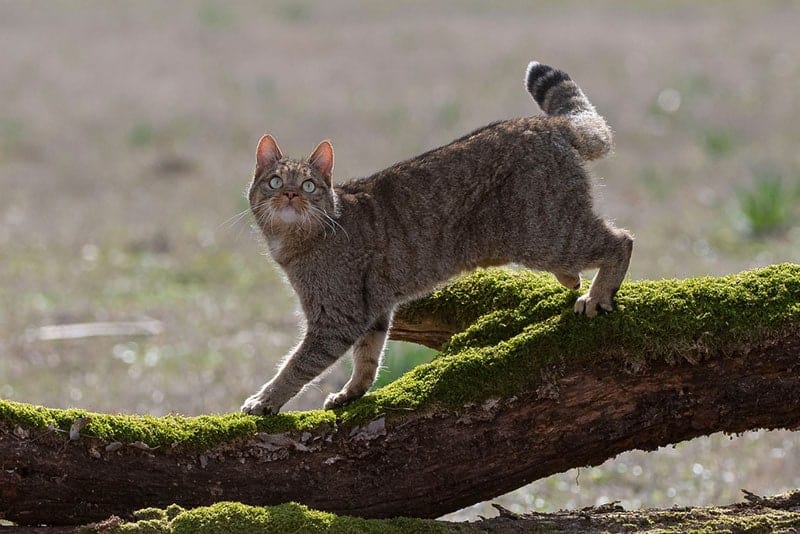
| Scientific name: | Leptailurus serval |
| Weight: | 6–18 pounds |
| Natural habitat: | Forests, grasslands |
Stemming from the same bloodline as the modern domesticated cat and with a similar look, this fluffy wild cat is associated chiefly with the forests of Europe. They’re not picky and will venture into other areas if that’s where the food is.
Sadly, some speculate that there are few pure populations of European Wildcats because of heavy crossbreeding with other stray and feral cat breeds.
10. Fishing Cat
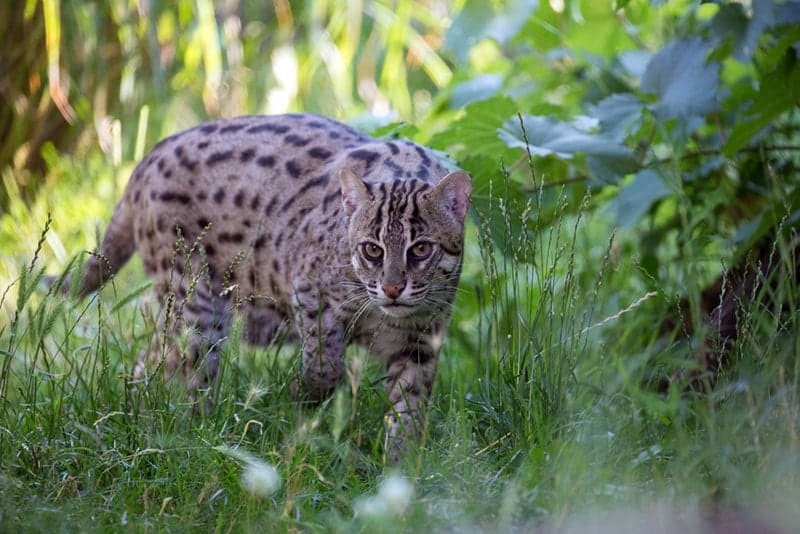
| Scientific name: | Prionailurus viverrinus |
| Weight: | 13–26 pounds |
| Natural habitat: | Swamps and wetlands |
True to its name, the Fishing Cat is great at traversing the water with their partially webbed paws. They prefer to dive or swim after fishy for supper but have no problem eating birds, reptiles, or small mammals.
This close cousin to the leopard is even swift enough to scoop out fish from the water! Tragically, their numbers have steadily decreased due to habitat destruction and poaching in southeastern Asia.
11. African Golden Cat
| Scientific name: | Caracal aurata |
| Weight: | 13–30 pounds |
| Natural habitat: | Moorlands, savannahs, grasslands |
About twice as big as the average housecat, the rare African Golden cat is closely related to the Serval and Caracal. They have a mesmerizing spotted color that ranges from gray to brown or golden, and some lack spots except on the belly. These beautiful cats face significant threats from poachers and habitat destruction from mining and oil industries.
12. Pampas Cat
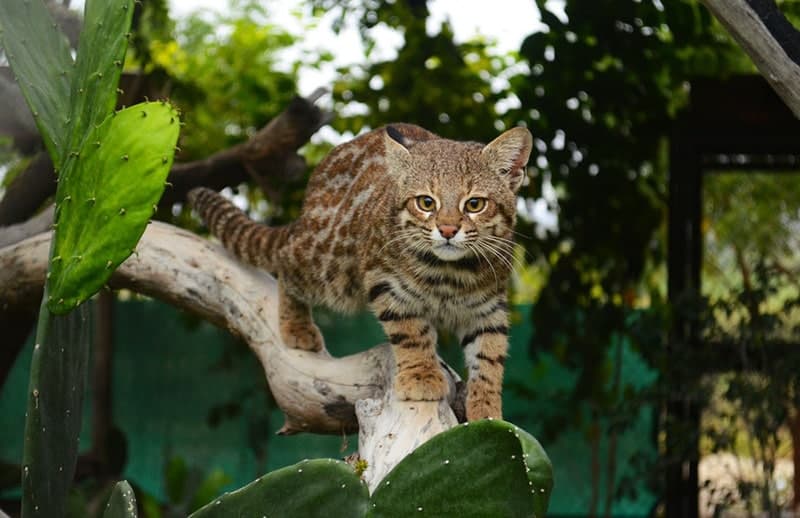
| Scientific name: | Leopardus colocolo |
| Weight: | 20–40 pounds |
| Natural habitat: | Moorlands, savannahs, grasslands |
Also known as the Colocolo, the bushy Pampas cat has a distinctive furry face and subtle color variations. Pampas cats climb all over South America, using their long tails to balance themselves in the trees.
They’re also known to live in high-altitude habitats, like the Andes. Strangely enough, for a cat, scientists seemingly can’t decide if this species is nocturnal or diurnal.
13. Amur Leopard
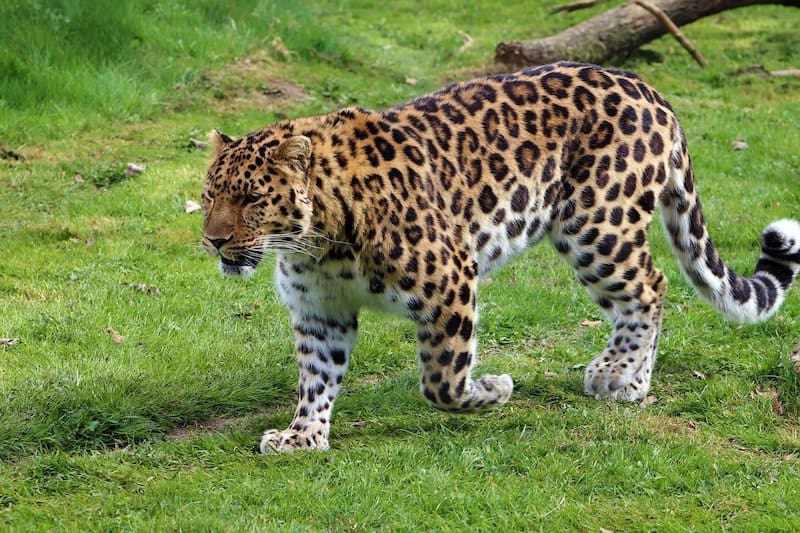
| Scientific name: | Panthera pardus orientalis |
| Weight: | 50–100 pounds |
| Natural habitat: | Snowy forests and mountains |
With just a hundred or so left in the world, the Amur leopard is one of the most critically endangered wild cats in the world. They all live in Far East Russia and some parts of China, where they’ve become masters of living in the perpetually snowy forests and mountains.
Genetic research has shown these leopards to be closely related but not quite identical to other Chinese and Korean leopards.
14. Marbled Cat
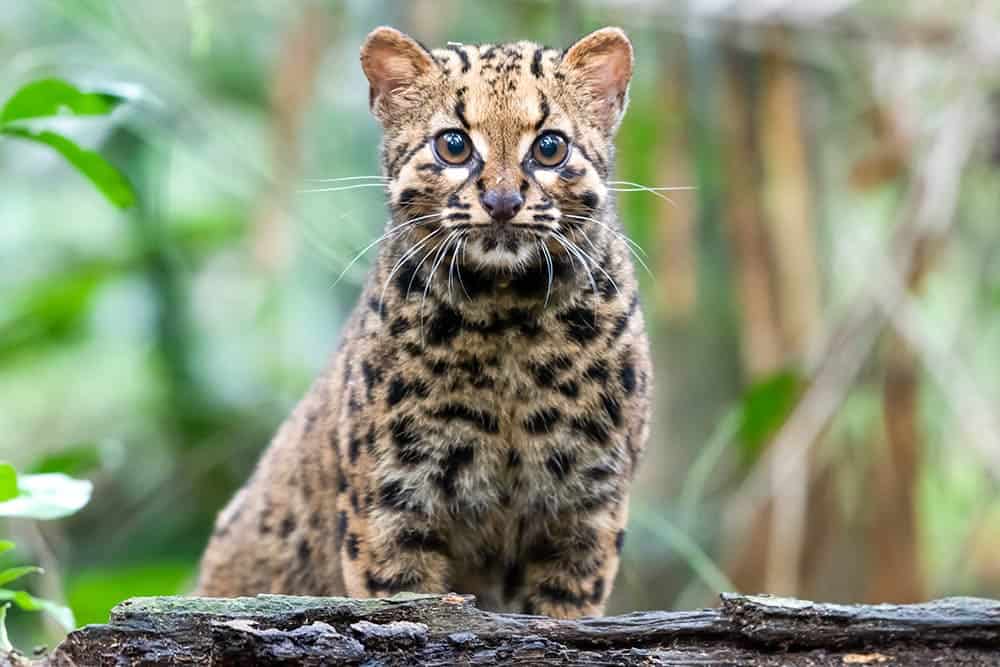
| Scientific name: | Pardofelis marmorata |
| Weight: | 5–11 pounds |
| Natural habitat: | Moorlands, savannahs, grasslands |
With their snakelike marbled coats, the Marbled Cat is easy to identify. However, they only live in a few parts of the Himalayas and Southeast Asia. Interestingly, the Marbled Cat has very large teeth, more similar to a big cat’s teeth, but they only grow to about the size of a domesticated house cat. In general, we know little about this species because they’re hermits even by feline standards.
15. Sand Cat
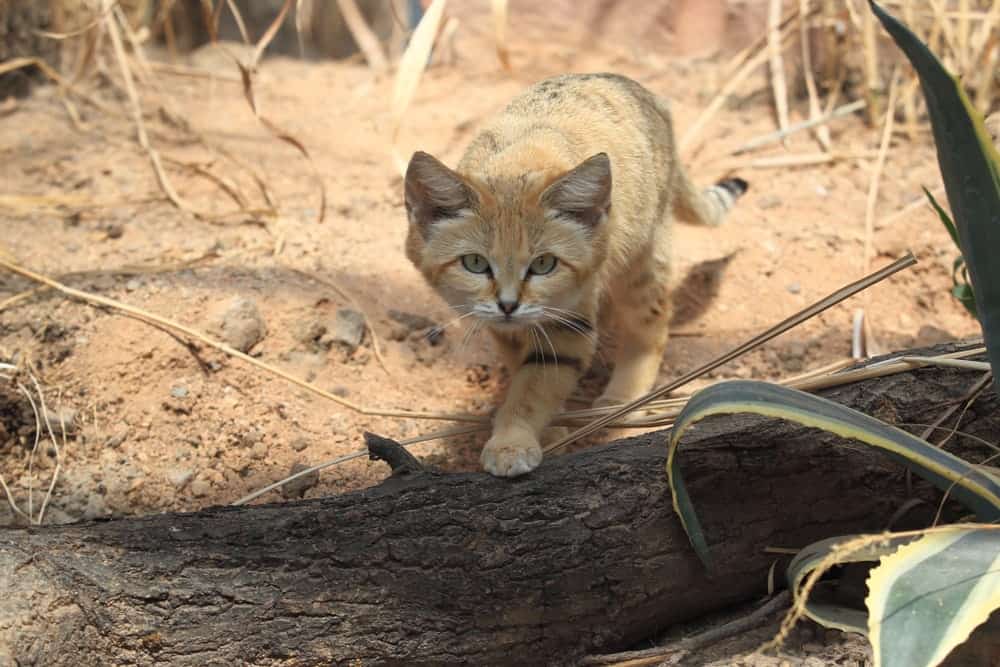
| Scientific name: | Felis margarita |
| Weight: | 20–40 pounds |
| Natural habitat: | Moorlands, savannahs, grasslands |
The striking Sand Cat is perfectly suited to the searing sands of the Sahara, but they’ve been spotted as far as the Middle East. Their plush, dense coats protect them from the night chill that falls upon the desert, and their thick black paws are resistant to the hot sands and stones. Sand Cats are consummate hunters, too, and they’ve been sighted killing venomous snakes.

Conclusion
Wild cats may not have the variety of Earth’s more prolific critters, but each is distinct and evolved to become the perfect predator in their environment. From the squirrelly Caracal that is sometimes kept as an exotic pet to the tree-climbing Ocelot, there are countless wild cats out there to observe become smitten with.
Featured Image Credit: tony mills, Shutterstock
